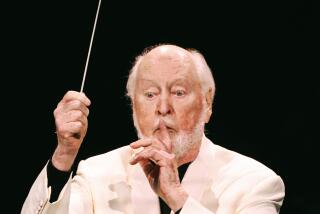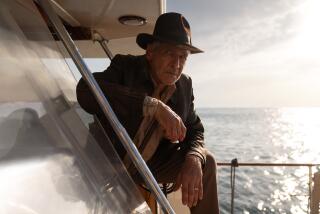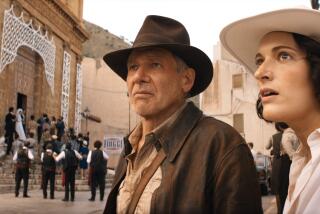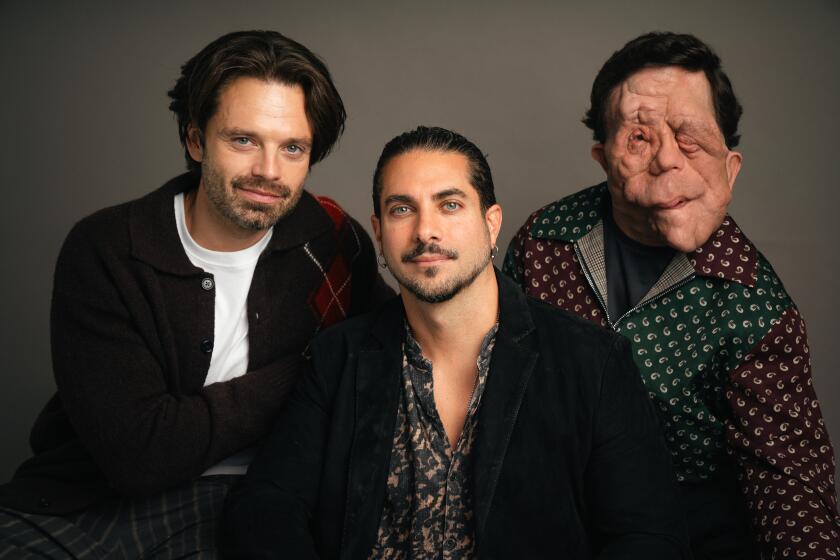Indy’s path still sets the pace
The FIRST three Indiana Jones movies, which Paramount is reissuing in a new boxed set this week in anticipation of the upcoming “Indiana Jones and the Kingdom of the Crystal Skull,” are rife with multiple nostalgias. They are pointedly set in the 1930s, in a simpler time when the world still seemed vast enough to be a playground for discovery. They are also a throwback to the old adventure serials that writer-producer George Lucas and director Steven Spielberg consumed as impressionable kids in the 1950s. But perhaps most of all, they are redolent of the 1980s and the dawn of the summer blockbuster as we know it.
Hollywood lore now has it that Lucas and Spielberg transformed the industry with their huge successes, which coincided with the end of the much-mythologized New American Cinema of the 1970s. It’s worth noting, though, that the template for the modern action film comes not from Spielberg’s “Jaws,” with its simmering unease and quiet stealth, or Lucas’ “Star Wars” movies, with their arcane, obsessive mythology, but from “Raiders of the Lost Ark” (1981), which more or less invented the theme-park aesthetic. It established what has since become a rule of thumb for blockbusters: Hit the ground running and never stop.
“Raiders” is striking for its unvarying pace, and it’s a testament to Spielberg’s agility as a director that he pulls it off. There are barely any lulls and John Williams’ unrelenting score compounds the monotony. Still, it has held up the best of the three movies, thanks in no small part to the spark between Harrison Ford, whose wry charisma remains intact throughout the franchise, and Karen Allen, easily the most engaging female presence in any Indiana Jones film.
It has been said, both by those who praise and those who condemn him, that Spielberg’s movies speak to kids of all ages. The Jones films arguably represent the director at his most infantile. Case in point: “Indiana Jones and the Temple of Doom” (1984), which, after a nifty sequence in a Shanghai nightclub, devolves into crass xenophobia.
“Indiana Jones and the Last Crusade,” arriving after a five-year gap, is much mellower. Spielberg was stung by the reactions to “Temple of Doom,” which some critics deemed inappropriately nasty and gruesome (it led to the creation of the PG-13 rating). What’s more, in the intervening years, he had introduced a socially conscious strain to his work, beginning with 1985’s “The Color Purple.” The father issues that dominate many of Spielberg’s films are neatly crystallized in “The Last Crusade”: The search for the Holy Grail is synonymous here with the search for Daddy (played by Sean Connery).
Spielberg has said that “Crystal Skull” will remain faithful, in spirit and style, to the original films. But it has been nearly 20 years since the last one. Not only is Spielberg a different filmmaker, his recent movies, including “A.I.: Artificial Intelligence,” “War of the Worlds” and “Munich,” are among the richest of his career. These are also, of course, different times when it comes to representing foreign misadventures on-screen. And if there’s one thing Spielberg, the definitive populist artist of our times, does better than almost anyone else, it is to exploit the mood of the moment.
More to Read
Only good movies
Get the Indie Focus newsletter, Mark Olsen's weekly guide to the world of cinema.
You may occasionally receive promotional content from the Los Angeles Times.









